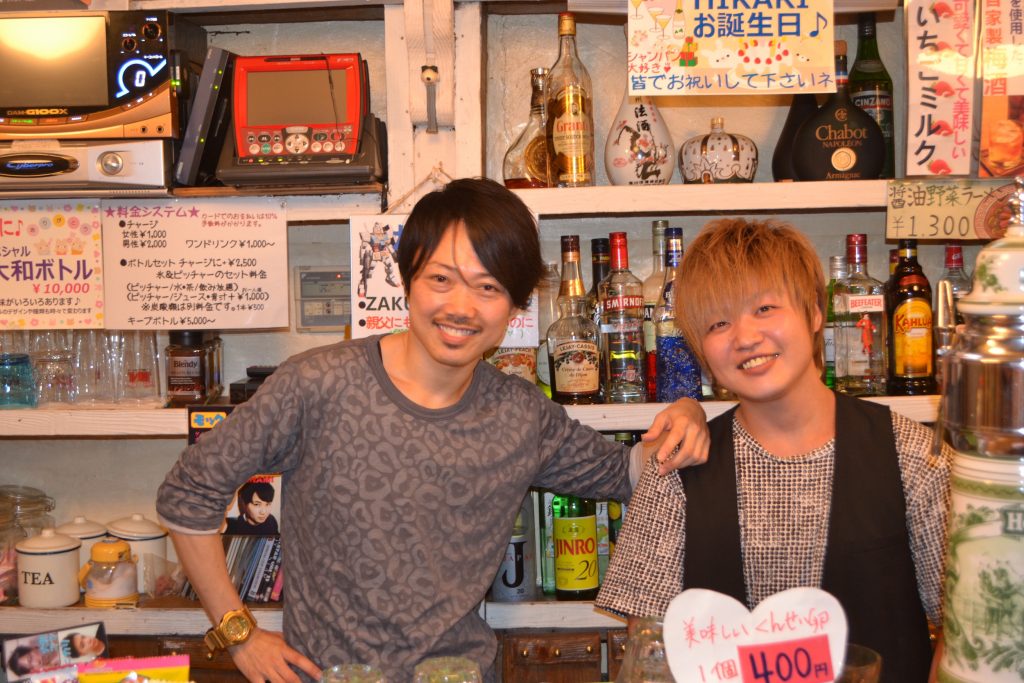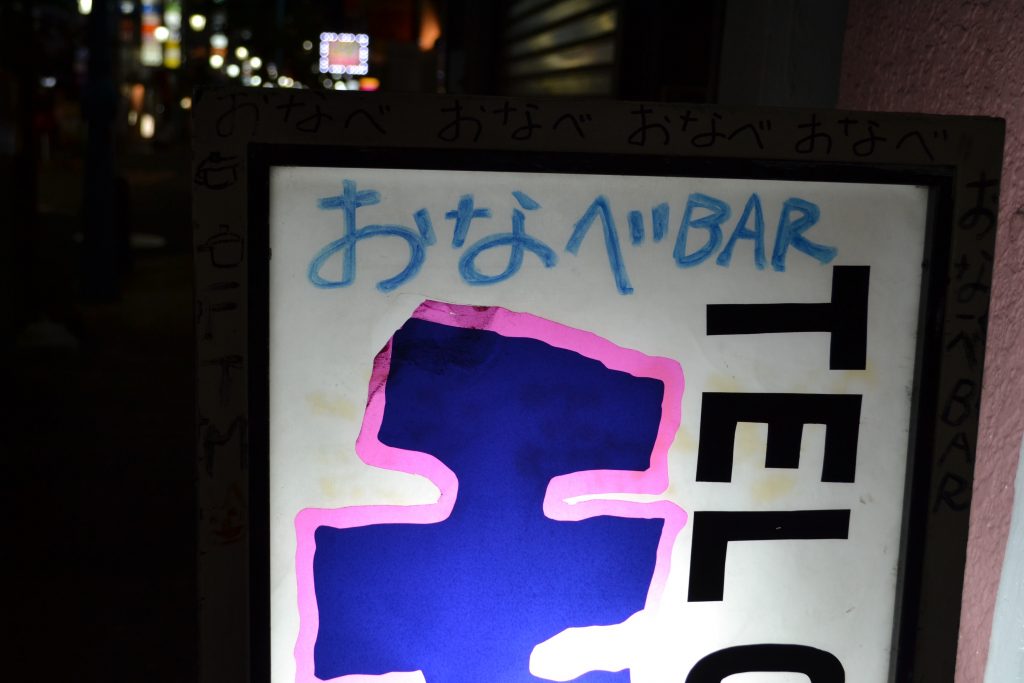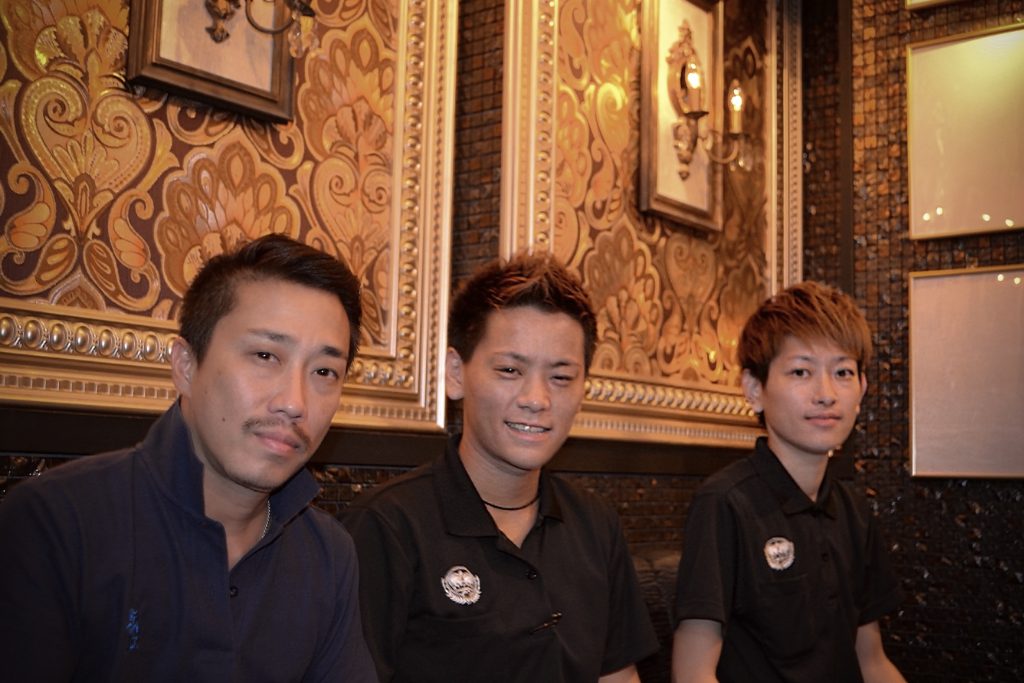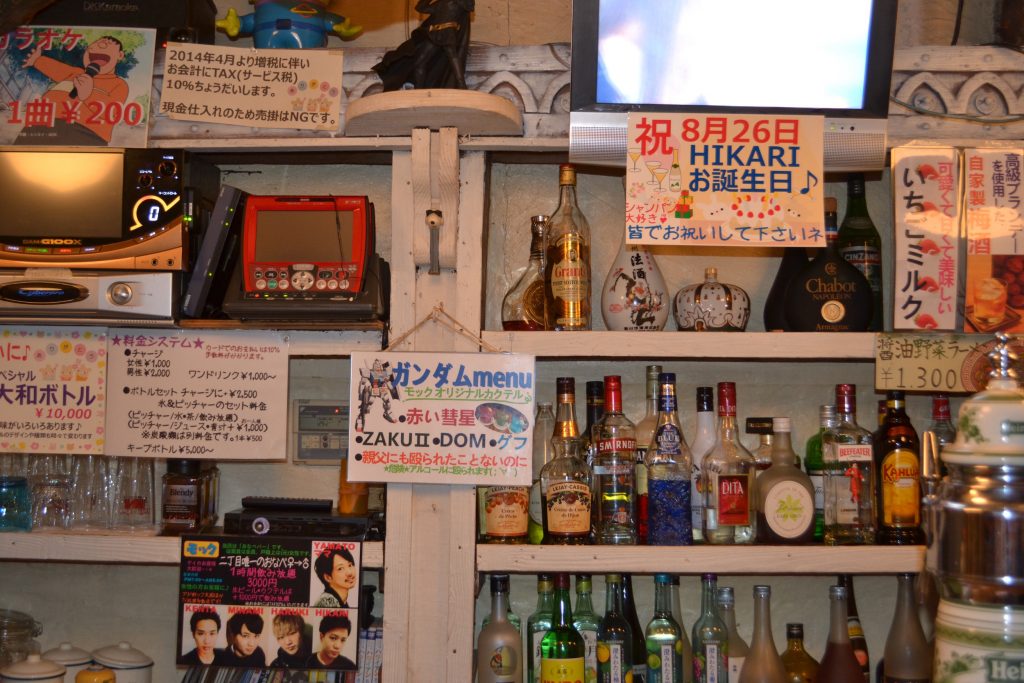They’re Men Born As Women, And Yes, You Can Call Them Onabe
Talking with Members of Japan's Transgender Community
Once “invisible,” onabe bars are now putting transgender men front and center. Some of the oldest of these bars are right here in Tokyo and they’re only growing in popularity. Here’s why you should visit one.
He’s handsome in a slender, elegant way. He runs a bar called Mock in the Shinjuku neighborhood of Ni-chome, Tokyo’s gay district. Like in most bars in the area, he goes by “Mama.” Unlike most other Ni-chome mamas, however, Mama Yamato is not a gay man (though he has adopted the mannerisms of one, which he says comes from working in the district for so long).
He was born a female, and spent over three decades of his life as a woman.
He was born a female, and spent over three decades of his life as a woman. He has also undergone the difficult physical and administrative process of acquiring legal male status, becoming a man in the eyes of the law five years ago. He proudly runs one of the only — and most likely the oldest — onabe (transgender men) bars in the district.

Mama Yamato (left) and one of his bartenders at Mock.
The term onabe literally means a type of pot commonly used to cook stews in. Unsurprisingly, many consider it an offensive term. A sentiment that has grown significantly as transgender men have begun to become more visible and accepted within the country — after a hard-won struggle, the Supreme Court set a precedence when they ruled on December 10, 2013 that a transgender man can legally be the adoptive father of a child born to his wife through artificial insemination, and the rise in popularity of boy band Secret Guyz and comedian Yukichi. Though the term onabe was coined not that long ago as the female equivalent of the older and more established expression, okama — which is a blanket word for everything from gay man to transgender woman to female impersonator — most people now prefer the term FTM, or “female to male.”
Yet the term onabe has survived in the enclave of night work, where transgender men use their formerly female status as a selling point to entertain in bars and clubs.
In an onabe bar, you go to share a drink and conversation with the FTM staff, the punchline being that these men and boys used to be girls.
In an onabe bar, you go to share a drink and conversation with the FTM staff, the punchline being that these men and boys used to be girls. And yes, a lot of the clientele do seem to come out of curiosity.

New Marilyn, the second place I visited, is a high-class onabe bar nestled right in the middle of Shinjuku’s Kabukicho. Its glitzy vibe is a complete contrast to the laid-back atmosphere at Mock, yet workers here also agree that curiosity is a major draw.
“A lot of first time customers say they’ve always wanted to come but never had the courage to,” says Kei Ohno, a 15-year veteran staff member of New Marilyn, which has been open for three decades and counting. With its sparkling interior, open space and a very busy and handsome staff of ten, the bar has a glittering and exclusive air about it. “Being a regular here gives you status,” says Kei, who believes they occupy a sweet spot in Tokyo’s nightlife. Onabe bars are rare and the ones that do exist tend to be small and modest. “We’re fancy, but our staff are also friendly and open.”
Though no two onabe bars are alike, they all do seem to offer a unique style of warmth and acceptance.
Kei and Mama Yamato say customers often come in seeking advice and help.
Kei and Mama Yamato say customers often come in seeking advice and help. “We are kind of like a counselor’s office,” says Yamato. Though male customers to New Marilyn must be accompanied by a woman on their first visit, both bars say their customers are an equal mixture of male and female, young and old. “All genres,” as Mama Yamato says. He cites a deep connection to his customers as the key to their success. “I had a customer come in for the first time in seven years, and I still remembered them!”
During my visits to the bar, there was everything from a young curious girl who’d always wanted to visit an onabe club, to an older successful businessman, to a young FTM guy excited about the physical transformations he was enjoying, and everything in between. “I feel energized by the onabe boys in this bar,” says the businessman. “If these guys can live their lives, I figure whatever I’m going through can’t be that bad,” he joked with what sounded like genuine affection and respect in his voice. And it can’t be denied that respect is a part of what draws people to the experience.

Staff at New Marylin
Traditionally, the professions most commonly associated with transgender men included wait staff in gay show pubs, care workers and other “invisible” employment that confined them to supportive, background roles. Of course, this stereotype does not apply to everyone, and if the FTM boy band and self-proclaimed “stardust rainbow idols” Secret Guyz are any indication, the cliché of the tragic, dull onabe is clearly fading fast. Yet that does not erase the struggles that come with being a transgender man.
Living as a man in a woman’s body can present many challenges. There’s the mental strain of having a female body, as well as the stress of being outed in a potentially hostile environment.
The fear of being found out was always there, says Haruki, a bartender at Mock who used to work as a truck driver.
“The fear of being found out was always there,” says Haruki, a bartender at Mock who used to work as a truck driver. And if one decides to take the step of physically undergoing a sex change or legally becoming a man, the process is complicated and drastic. As stipulated in the Seidoitsuseishogaisha no Seibetsu no Toriatsukai no Tokurei ni Kansuru Horitsu (“Act on Special Provisions for Handling Gender for People with Gender Identity Disorder”), to legally change one’s gender, both transgender men and women must be physically unable to have children, which means transgender men must undergo a hysterectomy and oophorectomy. As can be seen by the title of the above law, being transgender is officially classified as a shogai (disorder), and one must be diagnosed with the disorder to undergo treatment, which in this case is surgery to prevent a transgender person from bearing their own children.
Hikari, also a bartender at Mock, explains that most of these laws are passed to protect any existing or potential children. The belief is that it would be “confusing” and harmful for a child to have a parent change gender, or to be born to a transgender parent or parents. “I am a little sad that I won’t be able to pass on these genes that have been passed down to me from my parents,” says Hikari. It’s an invasive procedure that, unsurprisingly, most transgender men choose to forego. “I’d say about 80 percent don’t go that far,” says Yamato, who is one of the few who have obtained full legal male status.
In fact, according to the General Incorporated Association Japan People with Gender Identity Disorder, only 6,021 people have officially changed their gender since 2004, when the law allowing for it was passed.
In fact, according to the General Incorporated Association Japan People with Gender Identity Disorder, only 6,021 people have officially changed their gender since 2004, when the law allowing for it was passed. Though it’s not clear how many transgender people there are in Japan, this is clearly but a fraction of the total population.

Behind the bar at Mock
For transgender men, there’s also the issue — some would say privilege — of finding your identity. “I’m not a complete woman, nor am I complete man,” says Mama Yamato, describing the position many people questioning their sexuality are in. “People don’t fall neatly into those four categories,” he says of the “LGBT” label. When I asked if he had a message for any of our transgender or questioning readers, he had this to say.
“Don’t think you’re strange, or that you’re the only one,” he says.
There’s no such thing as ‘normal’.
“There’s no such thing as ‘normal’. I want you to find a path that allows you to live as true to yourself as possible, with as much ease as you can. And if you want to find that path, if you come to Ni-chome, if you come here [to Mock], we can help with that.”
And he should know. No matter what you’re going through, whether you’re questioning (the “Q” in LGBTQ) your sexual identity, or questioning your relationship, your career or your place in the world, someone with this transitioning and objective experience is sure to have a illuminating advice. And that includes people new to Japan. Both Mock and New Marilyn say they are happy to have customers from all backgrounds and nationalities, provided that they speak Japanese and/or are accompanied by a Japanese speaker.
Despite the change and progress that has taken place in recent years, there is still far to go.
But until then — and perhaps even after — onabe clubs are a great and accepting place to spend some time. “I want lots of different kinds of people to know about (New) Marilyn, and for them to speak to these people known as onabe, and to learn about us,” says Kei.
“The more visible we are, the easier this world will be for us all to live in,” adds Yamato. “Come experience it. Experience onabe. It’s a strange and wonderful world.”







